My rating: 4 of 5 stars
Milkman has written a ‘state of the art’ introduction to people change, from the field of behavioral economics. It is not a long book; the author has an easy style, each chapter is well illustrated and there is a a concise summary to conclude each chapter. Like many of such books the material borrows from other authors and I don’t think there was anything especially novel in this one. It’s particular perspective is ‘an academic writing for a popular readership’, so many of her examples (but not all) are from academic studies (hers and her colleagues), often in a business context (this makes a change to the many sports illustrations in other books).
The weakness of the book is that her principles still need to be taken on to the next step – implementation into the reader’s life. I think James Clear’s Atomic Habits is more practically oriented and so useful.
View all my reviews
-
How to Change: The Science of Getting from Where You Are to Where You Want to Be by Katy Milkman
-
A Burning in My Bones: The Authorized Biography of Eugene Peterson, Translator of The Message (Hardback) – Discover the Authoritative Life Story of the Iconic Pastor and Bible Teacher by Winn Collier
My rating: 4 of 5 stars
This book is very well written and is very much more than ‘he did this’, he ‘said that’. The author has had access to Peterson’s journals and private papers, as well as to the man himself – although I am not clear about how long he knew him well. If someone only knows Peterson through ‘The Message’, this will be a revelation.
However this book is disappointing in one sense. It reveals that Peterson was never really happy as an academic or as a pastor. Now some of that would be familiar to those who have read some of his books (e.g. Under the Unpredictable Plant). However while Peterson no doubt wrote about a ministerial ideal, it is hard to read this book now without thinking that at some level he crafted a fantasy. His children kept a tally of the evenings he was not there. He wrote about how he had no support from his denominational leaders (and he fabricated scandalous fictional reports). He faced a rebellion even when he went away for a short break during a sabbatical. He persuaded his congregation to relieve him of administrative duties, but that still left him unfulfilled. Again and again he felt misunderstood, in the wrong job, wanting to leave… He simply chafed at what ministerial life is bound to be. Even when he was a professor at Regent College he felt out of place.
As Collier tells the story, Peterson only really was at east at Flathead Lake, Montana in the home that his father built, with family nearby – with ample to time to read, pray and write. But even then the retreat into himself caused tensions with his patient wife, Jan. The author writes with considerable sympathy about Peterson’s last year, as dementia was biting, when an unguarded word in an interview about gay marriage (and then a retraction) caused such an uproar, and like it or not tarnished his reputation.
A book worth reading to gain a more rounded understanding of a much loved author.
View all my reviews -
Mark 3:13-19 Twelve are chosen
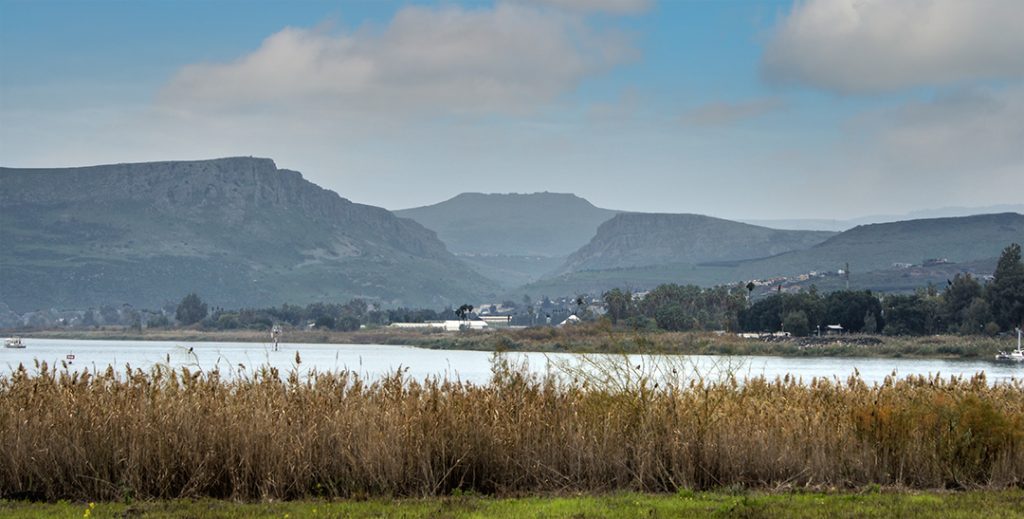
Mt Arbel and the Horns of Hattin, from near Capernaum And he went up the mountain and he summoned those who he wanted and they went to him.
And he appointed twelve (those he named apostles) so that
they might be with him
and he might send them to preach
and to have authority to cast out demons.And he appointed the twelve, and
he gave to Simon the name Peter,
and Jacob,* the son of Zebedee
and John, the brother of Jacob,
and he gave to them the name ‘Boanerges’, which is ‘Sons of Thunder’,
and Andrew
and Philip
and Bartholomew
and Matthew
and Thomas
and Jacob,* the son of Alphaeus
And Thaddeus
and Simon, the zealot
and Judas Iscariot, who handed him over.*James
O Lord Jesus Christ,
stay beside me to defend me,
within me to guide me,
before me to lead me,
and above me to bless me,
that with you and in you,
I may live, and move and have my being,
for ever and ever.
Amen.(unknown)
-
Saying Yes to Life: The of Canterbury’s Lent Book 2020 by Ruth Valerio
Although this is presented as Lent book, it could be read at any time of the year. Valerio takes the 7 days of Creation as launchpads for discussing the Bible’s teaching on the environment and each part of it. The beginning of each chapter is a fairly comprehensive treatment of the element of that day’s creation supplemented with information about the state of that aspect of the planet at the hands of humanity. There are some (but not very many) suggestions about what the reader might do in response.
Valerio writes openly about her life, her travels (wide!) and her attempts to lives in a sustainable / planet friendly-way. (I think there was more in her previous books – this one might have had some practical guidance in side bars.)
There is plenty of food for thought here.
View all my reviews -
The Art of Holy Week and Easter: Meditations on the Passion and Resurrection of Jesus by Sister Wendy Beckett
My rating: 4 of 5 stars
I think the version on which I read this book (iPad Kindle) app significantly impacts the appreciation of the art (and therefore the commentary). The pictures are after the words, and all need to enlarged – never easy. The art is less varied than in other books in the race – I don’t think there was anything approaching modern, and all fairly straight forward portrayals of the gospel story. Sr Wendy offers reflections that on the whole were fairly light commentary on what could be seen.
View all my reviews -
Body: Biblical Spirituality for the Whole Person by Paula Gooder
My rating: 4 of 5 stars
This book is easy to read (that is a compliment, not a criticism!) and slowly unfolds a Christian understanding of our human make up – particularly but not exclusively focussed on the body. This is a book of Biblical exploration, and while there are applications throughout, the book is weighted towards interpreting the NT. There is OT background and references to the Gospel, but most attention is give to Paul. There are ‘callout boxes’ to address side issues, that the author could not avoid to sustain her argument. There are some loose ends, such as the image of God and I think her treatment of 2 Corinthians 5 is unnecessarily inconclusive. But a good book to absorb.
View all my reviews -
The Tomb that was Empty
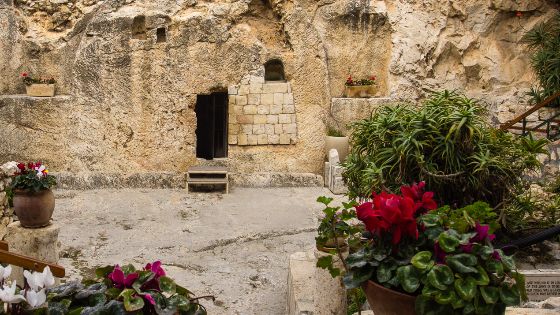
The Garden Tomb We know that Joseph of Arimathea was a wealthy person (think of the 100 pounds of spices!). So his burial plan would not have been the everyday ‘dug’ trench or built up ‘cist’ grave but a rock-cut tomb as is familiar around Jerusalem. It was clearly a place that one entered.
Apparently the rich in the first century BC began copying the Persian / Egyptian influenced tombs at Marisa. Here’s a photo I took there in 2013.
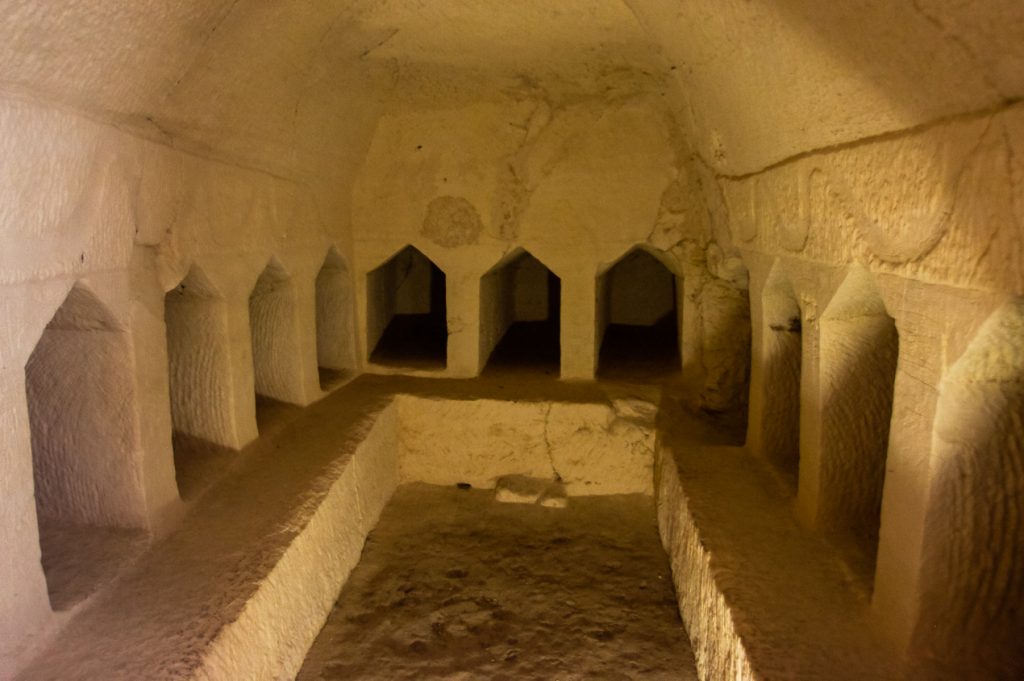
Bet Guvrin-Maresha The dead were placed in coffins in the side shafts (loculi / kokim). The bones were gathered later but left loose in the niches. One body to one niche.
We know that people in Jerusalem used kokim shafts for their dead. Here is a picture of some a few metres away from the traditional site of Joseph / Jesus’s tomb in the Church of the Holy Sepulchre.
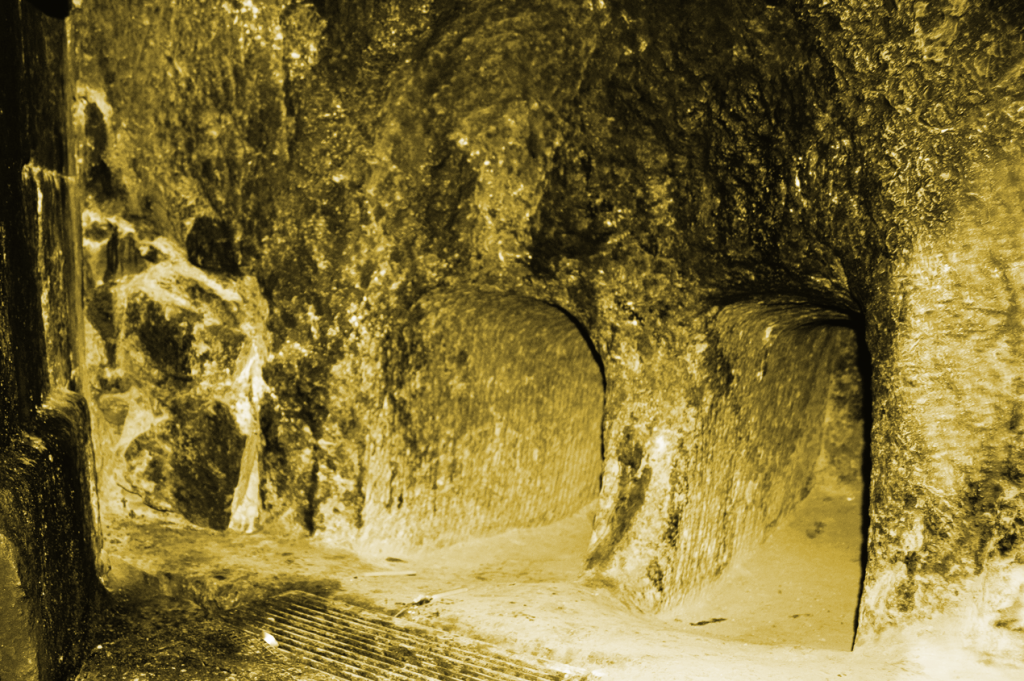
So it is entirely reasonable to believe that Joseph / Jesus’s tomb included kokim. It would seem that they did not use coffins, but shrouds.
However land was at a premium even in those days in Jerusalem and at one shaft per body, tombs soon filled up. Some of the Judean elite adopted the habit of collecting the bones after decomposition and placing them in ossuaries. (Saducees who had no doctrine of resurrection were less concerned about their remains, Pharisees on the other hand who did believe in resurrection wanted to keep their bones unmixed and saw their tombs as a way of re-enforcing their reputation and regard). Using ossuaries the shafts could then have multiple occupants. This had the advantage that many generations could be remembered within a restricted area. Here are many ossuaries found together on the Mount of Olives:
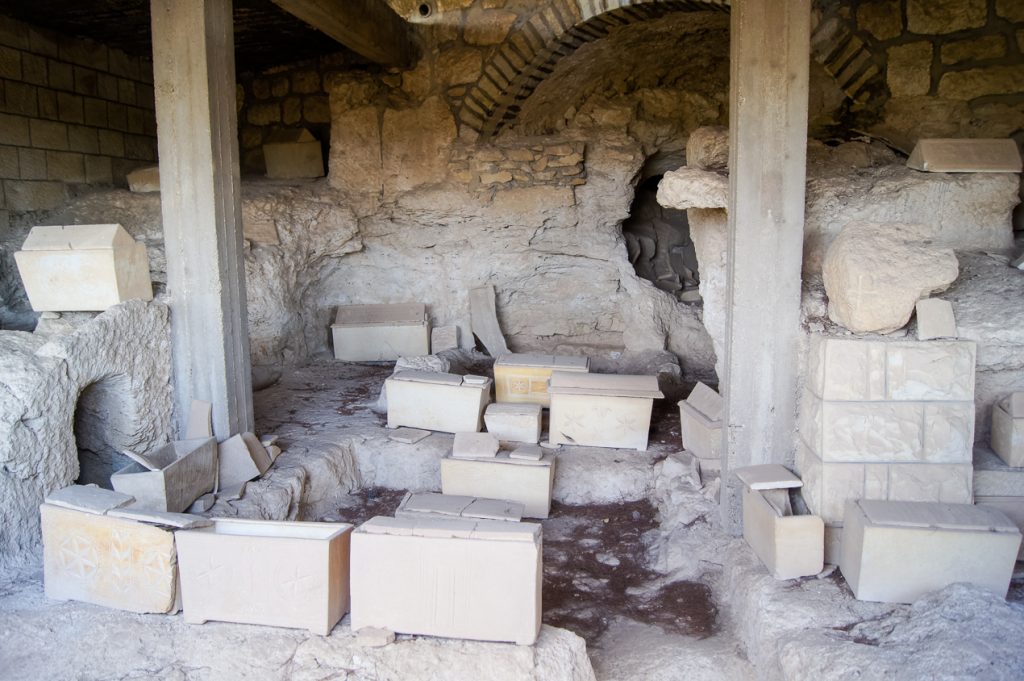
Corpses might be laid out in a kokh (primary burial) and then after a year the bones were collected, put in an ossuary and re-placed in a kokh (secondary burial).
In 1980 a tomb was discovered by accident at Talpiot, S Jerusalem. This is a plan showing how the niches were linked in an entire tomb (unlike the Church of the Holy Sepulchre -where the kochim have lost their context.)
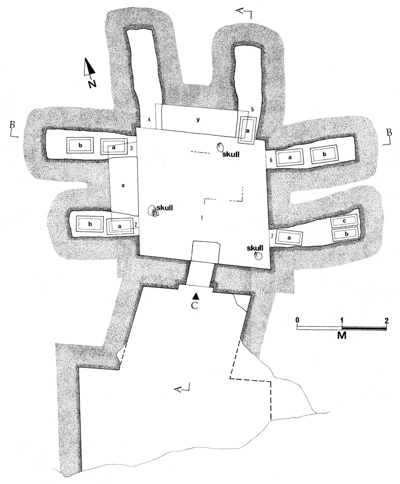
(https://jamestabor.com/the-1980-discovery-of-the-east-talpiot-jesus-tomb-what-we-now-know-in-2019/) Although there is some controversy about what was found where – it is generally accepted that ossuaries were found in the niches, as marked (a, b…).
But what this complex also shows us are arcosolia. These are two arched shelves (marked X and Y in plan) for the laying out of the corpse – see photo.
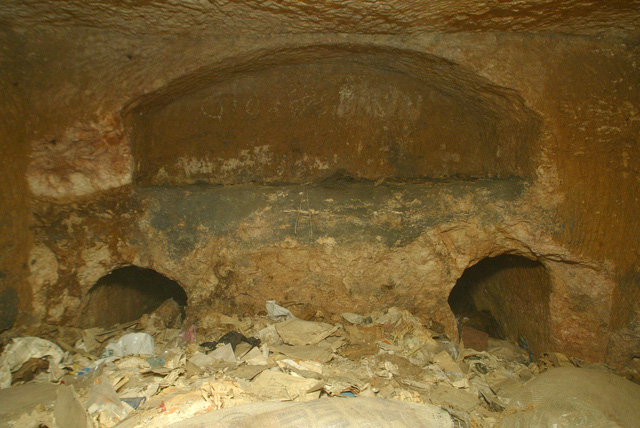
As a wealthy person it is very probable that Joseph’s tomb was large enough for there to be similar arcosolia – which would have been where Jesus’s body was laid (rather than the open central area as in the Nicanor Tomb).
Perhaps the linen clothes were left on the floor, and the face cloth on the shelf? As you can see from the plan there would have been room enough for two or three people to be inside, once beyond the very small opening .
-
Children of Time by Adrian Tchaikovsky
My rating: 4 of 5 stars
This book is quite striking in its scope and imaginative power. Over hundreds (thousands?) of years the reader follows two parallel stories: the journey of the survivors from earth seeking a new home, and the evolutionary development of a race of spiders (accidentally) seeded on a life-ready planet by an Earth scientist. The book climaxes with their inevitable meeting and conflict.
I am not sure I like this book – it is fairly grim and dark and at times has a ‘horror’ edge too it. But it certainly powerful story-telling.
View all my reviews -
Gilead by Marilynne Robinson
My rating: 3 of 5 stars – now revised to 4
I had heard ‘great things’ about his book so I confess that I was initially disappointed at the apparent lack of ‘big ideas’ or anything like a plot. Indeed I found it hard to grasp to begin with, so had to read the first 50 or so pages again to separate out in my mind the four generations – John Ames the narrator, his father, his grandfather and his own son, to whom he is writing his journal.
This book has the air of a reverie – it is the musings of a pastor in his late seventies, who has always lived in Gilead and who took on the ministry of his father (when he didn’t come back from a holiday.). So it is reflective and ‘slow’, and memories are teased out as a fuller of explanation of how things are is slowly built up.
The major ‘dramatic tension’ is the arrival of his best friend’s prodigal son late in the book- and the implicit threat to the affections of Ames’s wife and child. The author allows us to follow the wrestling in his spirit as he weighs how best to be gracious to the ne’er-do-well.
It is well-written with some lovely poetic passages; another book (like Olive Kitteridge – but even less dramatic) that captures the ebb and flow of everyday life. And this time with a decidedly Christian perspective.
—
I have just re-read Gilead (Feb 2021) and then this review. I entirely endorse what I previously wrote (!) but was struck on this reading how much ‘spiritual reflection’ there is in this; I expect a non-Christian / lay person might be impatient with the lack of plot and paucity of dialogue. Strangely I think the book reads better as a book than as an e-book.
View all my reviews -
Gentle and Lowly: The Heart of Christ for Sinners and Sufferers by Dane C. Ortlund
My rating: 3 of 5 stars
Bought on the strength of glowing reviews, I am disappointed by the reading of this book. Perhaps it is me! The exposition of Christ’s affection and love for his people is careful and comprehensive. The author has a command of English that is admirable and regularly throws in striking metaphors. He has read well a range of theologians. His main resources are the Puritan who are quoted at length; this is not bad thing.
However I think this book is aimed for a Christian from a ‘dour’ background. He spends much of the book persuading the ‘head’ that Christ is gracious, and that he reflects the Father’s kindness. ‘Where I am’ that is almost self-evident, but communicating that to the ‘heart’ is another thing. And in this regard the book needs more ‘heart-warming’ stories – some more more ‘show’ alongside the ‘tell’.
View all my reviews